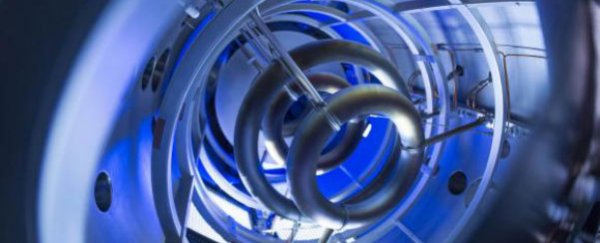Scientists in the US are developing a new nuclear fusion power source that's smaller, cleaner and more powerful than current nuclear reactors, and they aim to have it on the market in 10 years.
American aerospace and technology company Lockheed Martin has announced that they're working on a new nuclear fusion reactor that's 10 times smaller than any other reactor on the market. Their 100-megawatt reactor measures just 3 metres by 3 metres, which makes it compact enough to fit in the back of a truck.
Called a compact fusion reactor (CFR), researchers at Lockheed Martin say this small device will be able to power warships, spaceships, aeroplanes, and even a city filled with 80,000 homes. This means no more reliance on fossil fuels, which is significant, because according to Andrea Shalal at Reuters, it's been predicted that there will be a 40 to 50 percent increase in energy use over the next generation.
"Crucially, by being 'compact', Lockheed believes its scalable concept will also be small and practical enough for applications ranging from interplanetary spacecraft and commercial ships to city power stations," says Guy Norris at Aviation Week. "It may even revive the concept of large, nuclear-powered aircraft that virtually never require refueling - ideas of which were largely abandoned more than 50 years ago because of the dangers and complexities involved with nuclear fission reactors."
Lockheed Martin is also building this new energy source to be much safer and more efficient than current nuclear reactors, and more environmentally friendly. It runs on just 25 kg of deuterium-tritium fuel per year, which can generate nearly 10 million times more energy than the same amount of fossil fuels.
The key to the success of this system is a new design that allows it to hold way more plasma than current systems. Tom McGuire, who is heading up the project, told Aviation Week that current nuclear reactors only have a plasma ratio of about 5 percent, and they have to be enormous just to achieve this much. The CFR, on the other hand, is predicted to increase this ratio to at least 100 percent.
The team says they've tested the system out in the lab already, and they'll have a prototype up and running within five years. They predict their reactors will be operational and on the market in 10 years.
It might sound too good to be true, and these things often are, but the fact that Lockheed Martin is one of the biggest aerospace and military companies in the world makes this a promising announcement. But not everyone is impressed. Thermonuclear plasma physicist at the University of Texas, Swadesh M. Mahajan, told James West at Mother Jones, "we know of no materials that would be able to handle anywhere near that amount of heat," for a device as small the CFR.
And Tom Jarboe, professor of aeronautics and astronautics at the University of Washington, told Jessica Orwig at Business Insider, "The nuclear engineering clearly fails to be cost effective."
We'll just have to wait and see…

